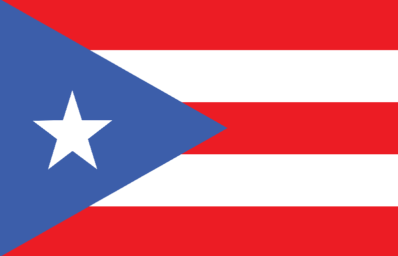Puerto Rico
Puerto Rico


Puerto Rico, a U.S. territory, is a Caribbean island in the northeastern Caribbean Sea. It has a population of around 3.2 million, making it the third most populated U.S. territory after Guam and the Virgin Islands. San Juan is the nation’s capital and largest city.
Puerto Rico has a reputation for its warm environment, stunning beaches, lively culture, and deep historical roots. When the Spanish invaded the island in the late 15th century, the Tano people lived there. The island’s architecture, food, and traditions all bear the hallmarks of the Spanish colonial era.
As the Spanish-American War ended in 1898, Puerto Rico officially became a U.S. colony. Although being U.S. citizens, Puerto Ricans are not afforded the same protections as those who reside in the contiguous 48 states. They are denied representation in Congress and the right to vote in presidential elections, among other rights.
The island utilizes the United States dollar and recognizes the Spanish and English languages as its official ones. The tourism, manufacturing, and service sectors are all vital to Puerto Rico’s diverse economy. The island’s stunning scenery, exciting nightlife, and interesting historical sites make it a favorite vacation spot for millions of people every year.
El Morro, a fortified Spanish castle constructed in the 16th century to guard the island of Puerto Rico, is a popular tourist attraction. The fort’s spectacular vantage point over the ocean has made it a favorite destination for sightseers.
El Yunque National Forest, the only tropical rainforest in the U.S. National Forest System, is another well-liked destination. Many species of plants and animals, including the critically endangered Puerto Rican parrot, make their home in this forest.
There is a thriving music culture in Puerto Rico, with styles like salsa, reggaeton, and bomba. Tito Puente, Ricky Martin, and Daddy Yankee are just a few of the well-known musicians that call the island home.
Puerto Rico has many appealing features, but it has also been struggling greatly in recent years. Hurricane Maria, which hit the island in 2017, killed dozens and caused severe destruction. Puerto Rico’s economic problem has been caused by the island’s large debt burden and high unemployment rates, both of which were exacerbated by the storm.
There has been a growing movement for greater independence from the United States in Puerto Rico in the wake of Hurricane Maria. The political status of the island, however, continues to be a hotly debated topic.
Almost 3.2 million people call Puerto Rico, a Caribbean island and unincorporated territory of the United States, home. Despite its diverse population, Puerto Rico has a troubled history of racism and discrimination, especially towards its black citizens.
Racism in Puerto Rico has its origins in the island’s colonial past. Once inhabited by the Spanish in the 16th century, the island eventually came under U.S. control in the late 19th century. At this period, the native Tano population was nearly wiped off and African slaves were transported to the island to labor on the plantations. Race-based inequality in modern-day Puerto Rico may be traced back to the island’s colonial and slave past.
Discrimination based on skin color is a common kind of racism in Puerto Rico. In Puerto Rican culture, those with lighter skin tones tend to have better social status and be held in higher regard, whereas those with darker skin tones experience bias and less access to resources. The media perpetuates this bias by presenting those with lighter skin tones in a more favorable light and those with darker tones as unattractive or even wicked.
Discrimination against black Puerto Ricans is pervasive in the labor market, the housing market, and the academic sphere. When compared to their non-black counterparts, black people are more likely to be poor and less likely to get hired for higher-paying employment. Others have pointed the finger at Puerto Rico’s school system, saying it ensures racial inequities by making it more difficult for black pupils to get a good education.
Police violence and racial profiling are additional problems that black Puerto Ricans encounter. The police on the island have been accused of discriminating against black residents and employing excessive force in black neighborhoods and on black people. The United States Department of Justice released a damning report in 2019 that said the police force in Puerto Rico had repeatedly violated citizens’ civil rights via the use of excessive force, illegal searches and seizures, and other methods.
As a people group, black Puerto Ricans have been traditionally under-represented in government and political life. Few black people have held the office of governor or mayor in Puerto Rico, and black politicians are rarely given leadership roles.
To yet, anti-racism initiatives in Puerto Rico have been ineffective and underfunded. Although anti-discrimination legislation has been passed, it is frequently not upheld. The Black Lives Matter campaign, which began in the United States in the year 2020 after the murder of George Floyd, is one example of a grass-roots effort to bring about change. Yet, if Puerto Ricans truly want to see structural change, they’ll have to put in the time and effort over the long haul.
To sum up, racism is still a major problem in Puerto Rico, and black island residents face bias in all facets of society. Education, policy reform, and a willingness to confront and combat systematic injustices are all part of the solution to this problem.













You must be logged in to post a comment Login